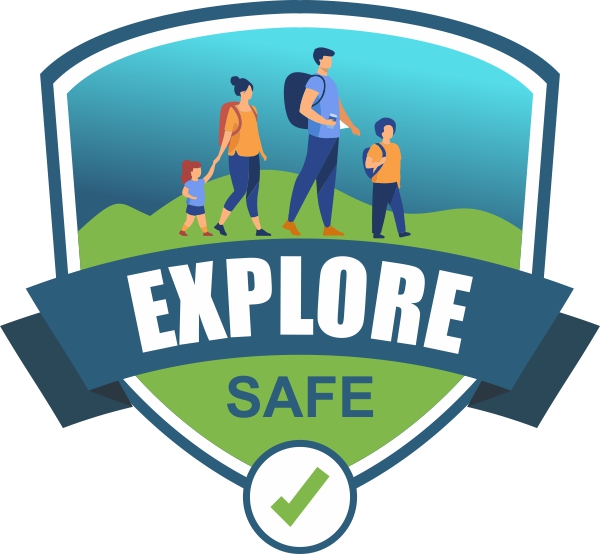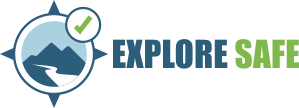About Explore Safe

#exploresafe
A Passion Forged in Nature and Tested in Rescue
My name is Darren Edwards, and my love for Australia’s trails runs deep. Since 2013, I’ve volunteered as the founder of Trail Hiking Australia, sharing my passion for Aussie trails and helping thousands enrich their experiences in the great outdoors. I even lead adventures into wild landscapes, teaching the importance of being prepared and respecting our natural playground.
But my commitment to hiker safety extends far beyond guiding and curating outdoor content. Since 2020, I’ve volunteered my time to Bush Search and Rescue. Witnessing firsthand the harrowing consequences of under preparedness, the toll it takes on individuals, families, and emergency services, has ignited a fire within me.
The stark reality of danger juxtaposed against the joy of discovery – this is the driving force behind Explore Safe.
With support, I plan to expand Explore Safe. My vision for Explore Safe is to become a leading safety advocate, equipping every Australian adventurer with the knowledge and tools to confidently explore and return home with unforgettable memories.
Join us on this journey. Together, let’s make Explore Safe a reality.
The Growing Disconnect
A Problem Needing Action
Every day in Australia, our emergency services risk their lives for at least one bush rescue. Frustratingly, they’re often called back to the same location on the same day to save under prepared explorers, venturing into nature, phone in hand, blissfully unaware of the risks.
While Australia’s hiking scene flourishes, awareness of safety best practices hasn’t kept pace. This disconnect manifests in various ways:
- Overconfidence: Inexperienced hikers often underestimate the challenges of the outdoors, venturing out with inadequate gear, knowledge, or planning. This can lead to risky decisions and potentially life-threatening situations.
- Peer pressure: Social media portrays hiking as a thrilling and carefree activity, often downplaying the importance of preparation and safety protocols. This can influence individuals to prioritise excitement over preparedness, potentially putting themselves at risk.
- Information overload: While resources on outdoor safety exist, they can be scattered, complex, or overwhelming for beginners. This makes it difficult for individuals to access and understand crucial information that could keep them safe on the trail.
- Misinterpreted times and difficulty ratings: Crowd-sourced platforms rely on user-generated times and difficulty ratings, which can be subjective and vary greatly. Inexperienced hikers may misunderstand these ratings, venturing onto trails beyond their ability, leading to overconfidence and risky decisions.
- Lack of accessible education: Basic outdoor safety skills may not be adequately covered in schools or mainstream media. This leaves individuals inadequately equipped to navigate the challenges and potential dangers encountered in the wild.
The result? A surge in search and rescue operations, overburdening emergency services and putting lives at risk. Accidents, injuries, and close calls can turn people away from the joys of outdoor exploration.
Alarming numbers
A story of under preparedness
Every day in Australia, at least one person requires a bush rescue. That’s an average of over 365 calls for help per year, placing immense pressure on emergency services and putting lives at risk. Here’s a few concerning stats:
- Since 2017, VICSES and Parks Victoria have conducted over 30 separate search and rescue operations at Werribee Gorge alone. This single location highlights the frequency and concentration of incidents, often stemming from insufficient preparation.
- In 2019, Queensland’s State Emergency Service volunteers spent over 11,600 hours on Land Search, Special, and Vertical Rescue operations. This translates to more than 483 days dedicated to rescuing unprepared individuals, time that could have been directed towards other emergencies.
- Search and rescue operations require, on average, 8 SES volunteers in three vehicles, working for around four hours, amounting to 32 hours of volunteer time for each rescue. This does not include the work undertaken by Land Managers, Ambulance Services, and Police Search and Rescue personnel.
Wanderlust and safety
The consequence of under preparedness
The disconnect between wanderlust and safety awareness has tangible and often tragic consequences:
- Accidents and injuries: Unprepared hikers are more susceptible to falls, dehydration, hypothermia, and other mishaps, putting themselves and potentially rescuers at risk.
- Search and rescue operations: These resource-intensive missions divert emergency services from other critical needs and endanger the lives of both rescuers and unprepared individuals.
- Environmental damage: Uninformed hikers can inadvertently harm local flora and fauna, disrupting ecosystems and leaving a negative impact on the natural world.
Bridging the gap
Explore Safe: Bridging the gap, ensuring safe and enjoyable adventures
Explore Safe was born from the recognition of this disconnect and a deep desire to bridge the gap between passion for the outdoors and responsible self-reliance. By raising awareness, providing accessible resources, and promoting responsible trail practices, we aim to turn the tide on under preparedness and ensure that everyone can enjoy Australia’s natural beauty safely and sustainably.
Together, let’s make the outdoors a safer and more enriching experience for all.
EXPLORE SAFE
Safety in nature
Explore Safe aims to raise national awareness of hiker and bushwalker safety and promote responsible self-reliance. We aim to achieve this by:
Through this campaign, we will encourage people to learn more about Explore Safe and take action to ensure their next outdoor adventure is a safe one.
This will involve directing them to the Explore Safe website for access to information, providing downloadable resources, and encouraging them to share their own safety tips using a campaign hashtag #exploresafe.
We believe that by carefully planning and executing this campaign, we can help make Australia’s incredible natural beauty accessible and enjoyable for everyone while promoting the importance of safety and environmental responsibility.
Join us on this journey. Together, let’s make Explore Safe a reality.
